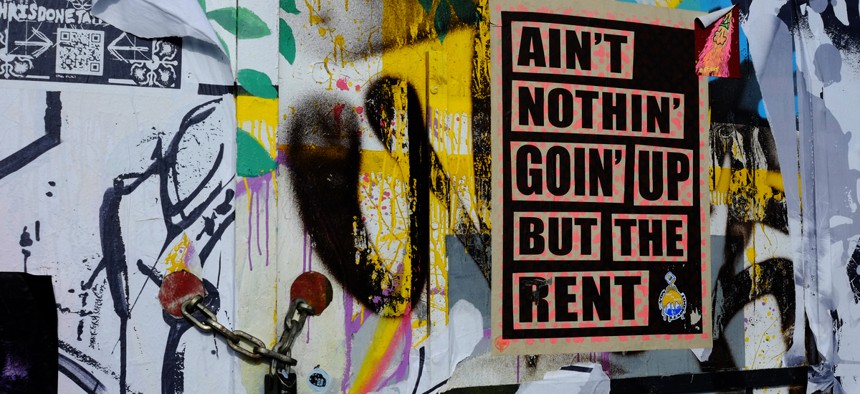Gentrification is Most Concentrated in Large Cities

About a quarter of urban areas saw at least one area gentrify from 2000 to 2013, but most low- and moderate-income areas were unaffected, researchers found. Shutterstock
Seven cities account for almost half the gentrification in America, according to research from the National Community Reinvestment Coalition.
Chicago, Washington D.C., New York City and Philadelphia are among seven cities that account for nearly half the gentrification in the United States, according to a study released this week by the National Community Reinvestment Coalition.
Baltimore, Los Angeles and San Diego round out the top seven. In contrast, researchers found that medium and small cities were unlikely to be touched by gentrification.
“Gentrification was centered on vibrant downtown business districts, and in about a quarter of the cases it was accompanied by racialized displacement,” researchers wrote in the study. “Displacement disproportionately impacted black and Hispanic residents who were pushed away before they could benefit from increased property values and opportunities in revitalized neighborhoods. This intensified the affordability crisis in the core of our largest cities.”
The study defines gentrification as occurring when “an influx of investment and changes to the built environment leads to rising home values, family incomes and educational levels of residents.” That phenomenon often leads to minorities being pushed out of their long-time neighborhoods, which the study defines as cultural displacement, or what happens ”when minority areas see a rapid decline in their numbers as affluent, white gentrifiers replace the incumbent residents.”
Researchers examined the issue by studying census and economic data, identifying 1,049 neighborhoods in 935 municipalities where gentrification occurred between 2000 and 2013. Nearly a quarter—235—of those tracts experienced displacement as a result, where increased property values, rents and taxes forced more than 135,000 residents to move to less expensive areas.
That displacement disproportionately affected black and Hispanic residents, the report says. In Washington D.C. alone, 20,000 black residents were forced to move, and 13 percent of the black community in Portland, Oregon was displaced in 10 years.
Both gentrification and displacement are relatively rare nationally. Across the country, 24 percent of urban areas saw at least one tract gentrify from 2000 to 2013, according to the data. But “most low- to moderate-income neighborhoods did not gentrify or revitalize during the period of our study,” researchers wrote. “They remained impoverished, untouched by investments and building booms that occurred in major cities, and vulnerable to future gentrification and displacement.”
Because of this, cities and residents have an often complicated relationship with gentrification. One Baltimore resident living in an “impoverished and high-crime neighborhood” asked researchers, “When can we get some of that (gentrification) in my community?” On the other side, the Lincoln Temple United Church of Christ in the Shaw neighborhood of Washington, D.C. saw its 160-year-old congregation dissolve after membership dropped to 20 people after rapid gentrification in its community.
Local officials and advocates can combat gentrification by pursuing “policies that encourage investment while promoting the ability of existing residents to stay and benefit from revitalization,” the report concludes. Some specific strategies include developing partnerships between banks and community-based organizations to encourage equitable development, passing inclusionary zoning regulations and tapping into federal programs that can identify neighborhoods at risk of gentrification.
“Community groups can then work to develop strategies to avoid displacement of incumbent residents by attracting investment and providing affordable housing,” the report says.
Kate Elizabeth Queram is a Staff Correspondent for Route Fifty and is based in Washington, D.C.
NEXT STORY: States Could See 'Unprecedented' Flooding





